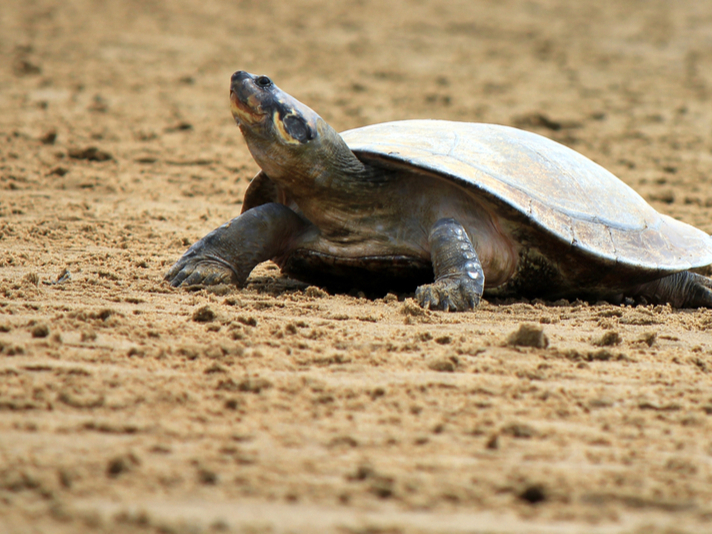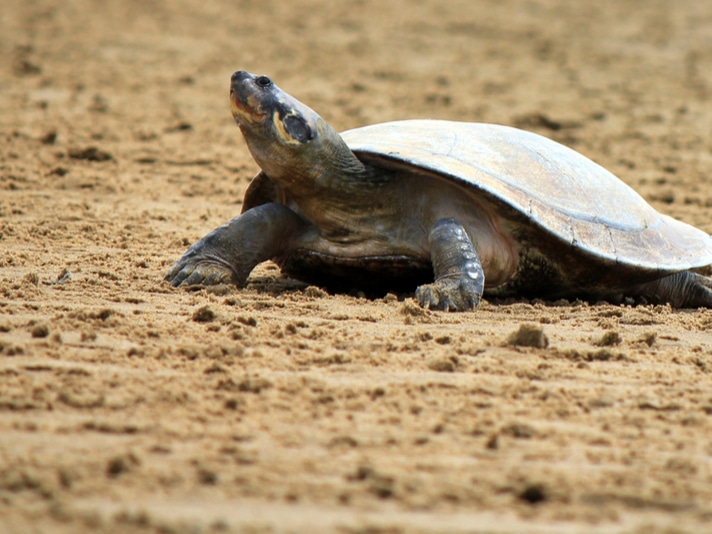The South American Giant River Turtle has benefited from local beach protections on the Amazon River.
The giant South American turtle (Podocnemis expansa), an over-exploited species in the western Brazilian Amazon has benefited from efforts to protect the reptile, and those efforts have also had unintended consequences as other species within the same ecosystems have also begun to thrive as efforts were made to protect the beaches in which the large chelonian resides.

Tarcisio Schnaider/Shutterstock
The South American Giant River Turtle has benefited from local beach protections on the Amazon River.
According to a study in the journal Nature, local conservationists, in conjunction with the University of East Anglia in England, and Universidade Federal de Alagoas, Anglia Ruskin University and Universidade Federal do Amazonas, conducted a data analysis of Podocnemis expansa nesting data collected over the last 40 years on protected beaches along a tributary of the Amazon River. The researchers also surveyed a 1,000 km expanse of protected and unprotected beaches of the river, gathering data on not only the turtles, but also birds, iguanas, caiman, large fish, river dolphins, and insect populations.
They discovered that the populations of giant South American turtles are on their way to full recovery on those expanses of river protected by local vigilantes, and have seen nine times more turtles hatching on these protected beaches than what was observed in 1977. The researchers found that on protected beaches with more than 2000 turtle nests, just 2 percent of the nests were pilfered by poachers. On unprotected beaches, poachers stole eggs from 99 percent of the 202 nests surveyed.
The protected beaches also saw population increases in other fauna, including yellow-spotted river turtles (P. unifilis), and six-tubercled river turtle (P. sextuberculata).
"Relying on a handful of government officials, who are often based in urban centres, to protect five million square-kilometres of Amazonian rivers and forests is at best a losing battle which so far has largely failed," study author Prof. Carlos Peres of the University of East Anglia School of Environmental Sciences told Phys.org
"We need to trigger and then subsidize powerful 'win-win' alliances with local communities to both ensure their welfare and sustain the collective vigilance that can maintain the integrity of the world's largest tropical wilderness region."
The complete study can be read on the Nature website.



